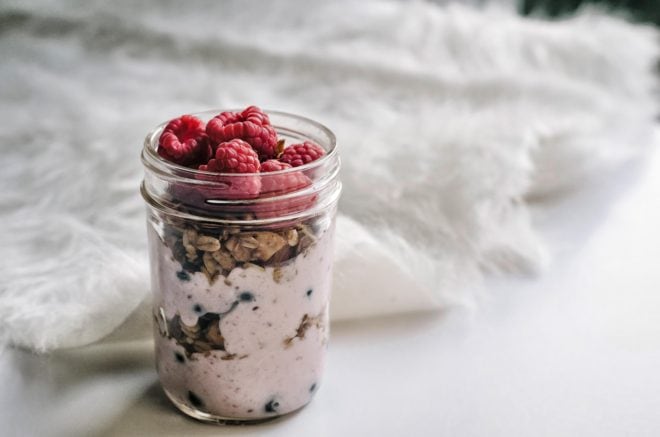Aside from drying foods at home, a food dehydrator can also help you make potpourri and dough ornaments, raise bread dough, and even make yogurt. Yes, you heard it right. A food dehydrator can help you make homemade yogurt.
We mentioned many articles ago, that a food dehydrator is a kitchen appliance every home should have. It is worth the investment because it becomes a workhorse for various uses.
In this article, we will focus on how to make yogurt using a food dehydrator. Once you try this method, you’ll never need a yogurt maker that only serves one purpose or even buy one at the grocery store.
Table of Contents
What Is Yogurt?
It is not known where yogurt (also yoghurt or yoghourt) comes from, but it is thought that it has its roots in Mesopotamia dating back 5,000 B.C. It comes from the Turkish word yoğurt which means “to knead” or “to be curdled”.
It is basically a food product of milk fermentation. The bacteria used to make yogurt are called yogurt cultures. These bacteria ferment lactose found in milk into lactic acid, which then acts on milk proteins that gives yogurt its characteristic taste and texture.
The milk used to make yogurt may be homogenized or not, pasteurized or raw. However, each type of milk may produce different results.
How Nutritious is Homemade Yogurt?
Plain yogurt from whole milk contains 81% water, 9% protein, 5% fat, and 4% carbohydrates, including sugars. A serving is rich in vitamin B12 and riboflavin (vitamin B2), with moderate amounts of protein, phosphorus, and selenium.
Yogurt is often associated with probiotics because it contains live bacterial cultures that are beneficial in digestion and metabolism.

How to Make Homemade Yogurt Using a Food Dehydrator
There are only two ingredients in making yogurt: milk and non-pasteurized plain yogurt.
Wait, what? You might ask why you’ll be needing yogurt when you’re actually making one.
If you’ll go back to the definition of yogurt, you’ll remember that we need to ferment the milk with live bacteria. Of course, we can’t just add any other bacteria, so we have to get it from a trusted source.
Ingredients:
- ½ gallon low-fat milk
- 1 cup powdered milk
- 2 tablespoons non-pasteurized plain yogurt
Again, you may use homogenized, non-homogenized, pasteurized, or raw milk. Powdered milk is used to make the yogurt thicker just like the commercially-available yogurts.
Procedure:
- In a pot or saucepan, add powdered milk to the low-fat milk and mix well.
- Place the pot over medium heat and wait until the temperature reaches 185°F to 195°F. or right when it starts to bubble but not to the point of boiling. Scald for 2 seconds.
- Remove from heat and cool to 110°F to 115°F.
- When the milk reaches 110°F, whisk in yogurt. Mix well with the warm milk to distribute all of the bacteria.
- Transfer the mixture to your glass jars and cover.
- Remove all the trays from your dehydrator. Preheat your dehydrator to 105°F to 115°F.
- Place your jars inside the dehydrator, close its door, and allow to incubate for 8 to 10 hours.
No need to check on your yogurt as you do with drying foods. Yogurts don’t want to be disturbed. So don’t open the door, don’t bump the dehydrator, don’t shake the jars, or stir the mixture while incubating.
Also, different manufacturers recommend different temperatures for making yogurt. It’s better to follow their recommendation.
After incubating, you may place the jars inside the refrigerator. The yogurt will thicken as it cools. You may enjoy your homemade yogurt the next day.
You may add fresh fruits before serving. Don’t forget to leave a few tablespoons of your homemade yogurt which you can use when you make another batch in the future.
If you’re using raw milk, you will have a nice layer of cream on top of your yogurt and will also produce whey. You may mix it with the yogurt or drain it off and use it to make bread. Yogurt made from pure liquid milk will not be thick.
Final Thoughts
Aside from being a good source of probiotics, yogurt can also be a good substitute for sour cream, buttermilk, or in any recipe that calls for cultured milk. And the good news is you can make homemade yogurt at home using a food dehydrator.

